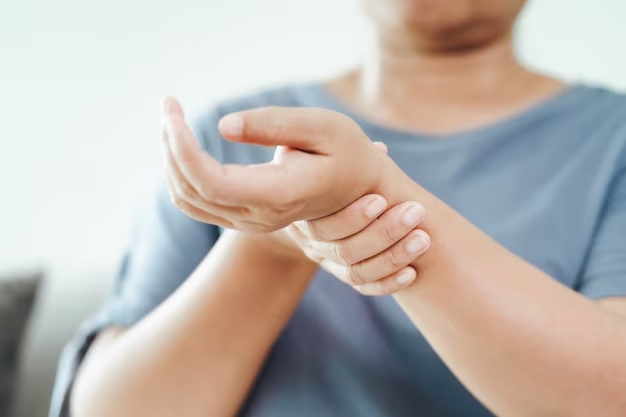Is It Arthritis? Signs, Symptoms, and What You Should Know
Are your joints screaming for attention? Maybe it's that persistent ache in your knees when you climb stairs or the stiffness in your fingers each morning that makes you wonder, “Do I have arthritis?” 🤔 This question is more common than you might think, and while many people experience joint pain, it doesn’t always mean arthritis is the culprit. Let’s dive into what arthritis is all about and how you can determine if it might be affecting you.
Understanding Arthritis
Arthritis is not a single disease—it's a broad term that covers over 100 different joint conditions that affect people of all ages. The most common types you might have heard of include osteoarthritis and rheumatoid arthritis. Each has its own set of symptoms and impacts, so it's crucial to know the differences.
Osteoarthritis vs. Rheumatoid Arthritis
- Osteoarthritis (OA) is the "wear and tear" type, occurring when cartilage—the slippery tissue covering the ends of bones—breaks down. It's more likely to develop as you age and is commonly found in hands, knees, hips, and spine.
- Rheumatoid Arthritis (RA) is an autoimmune condition, meaning your immune system mistakenly attacks your joints. RA can cause swelling, pain, and eventually joint deformity. This condition frequently affects the hands, feet, and wrists and can occur at any age.
Symptoms to Watch For
If you're trying to determine whether you have arthritis, here are some key symptoms you should be aware of:
- Joint Pain: The most common symptom experienced. It may be constant or can come and go.
- Swelling: Stiffness and swelling around the joint may signal inflammation.
- Reduced Motion: Difficulty moving the affected joint due to stiffness.
- Warmth and Redness: In conditions like RA, you might experience warmer and reddish joints.
- Fatigue and Malaise: More typical of RA, where you may feel tired or slightly unwell.
Recognizing Severity and Patterns
Understanding the patterns of symptoms can also help narrow down which type of arthritis might be at play:
- OA often impacts joints asymmetrically, meaning it might be more severe in one knee than the other.
- RA usually affects joints symmetrically—if your right hand is inflamed, your left might be too.
Risk Factors to Consider
Certain factors can increase your chances of developing arthritis:
- Age: The risk increases with age.
- Genetics: A family history of arthritis can make you more susceptible.
- Gender: RA is more common in women, whereas OA is more equal but still slightly more frequent in women.
- Previous Joint Injuries: Past injuries can predispose your joints to arthritis.
- Obesity: Excess body weight adds stress to joints, particularly the knees and hips.
Steps to Take If You Suspect Arthritis
If the symptoms above sound familiar, consider taking these steps:
Self-Monitoring
Keep track of your symptoms by journaling any patterns you notice. Note when the pain occurs, its intensity, and any triggers or relieving factors. This data can be invaluable for healthcare professionals to assess your situation.
Consult a Healthcare Professional
A doctor's visit is crucial. They may suggest a combination of methods to diagnose arthritis:
- Physical Exams: Observing the joint for any swelling, warmth, and mobility restriction.
- Imaging Tests: X-rays, MRI, or CT scans can help visualize joint damage or inflammation.
- Blood Tests: Especially for RA markers like the rheumatoid factor or antibodies.
Lifestyle Adjustments
While certain things are out of your control, adopting healthier lifestyle habits can alleviate arthritis symptoms and slow progression.
- Exercise Regularly: Low-impact exercises like swimming can help keep joints flexible.
- Maintain a Healthy Weight: Reducing strain on your joints.
- Eat a Balanced Diet: Include anti-inflammatory foods rich in omega-3 fatty acids.
- Stay Hydrated: Hydration supports overall joint health.
- Use Heat or Cold Packs: To reduce pain and swelling.
Exploring Treatment Options
While there’s no cure for arthritis, several treatments can help manage symptoms and improve quality of life.
Medications
Doctors might recommend:
- Pain relievers such as acetaminophen or NSAIDs like ibuprofen.
- Disease-modifying antirheumatic drugs (DMARDs): Essential for RA to slow disease progression.
- Corticosteroids: To reduce inflammation quickly.
Physical Therapy
Physical therapists can teach you exercises tailored to strengthen the muscles around your joints, increasing flexibility and reducing pain.
Surgical Options
In severe cases, when other treatments don't help, surgical interventions such as joint repair or replacement might be considered.
Embracing Support Networks
Living with arthritis can be challenging, but you don’t need to face it alone.
- Support groups can offer emotional support and practical advice.
- Online forums provide platforms to share experiences and tips.
Empowering Yourself with Knowledge
By understanding the signs, symptoms, and treatment options for arthritis, you're taking an important step toward managing your health. Empower yourself by continuing to learn about arthritis and advocate for your well-being, whether through discussions with your doctor or joining support communities.
Learning everything you can about arthritis and taking proactive steps will ensure you’re ready to navigate your health journey with resilience. 🌟
Quick Reference Summary
- 👀 Recognize Symptoms: Joint pain, swelling, stiffness
- 🔍 Identify Type: OA - wear and tear; RA - autoimmune
- 📈 Risk Factors: Age, genetics, gender, obesity
- 🗂️ Document Symptoms: Track patterns and severity
- 👩⚕️ See a Doctor: For a proper diagnosis and treatment options
- 💪 Lifestyle Tips: Exercise, balanced diet, hydrate
- 💊 Consider Treatments: Meds, physical therapy, possibly surgery
- 👐 Find Support: Join groups and learn from others

Related Articles
- Are Bananas Bad For Arthritis
- Are Tomatoes Bad For Arthritis
- Can An Inflamed Nerve Cause Arthritis
- Can Arthritis Be Cured
- Can Arthritis Be Reversed
- Can Arthritis Become Septic After Infection From Injection
- Can Arthritis Cause Numbness
- Can Arthritis Cause Swelling
- Can Cracking Knuckles Cause Arthritis
- Can Cracking Your Knuckles Cause Arthritis